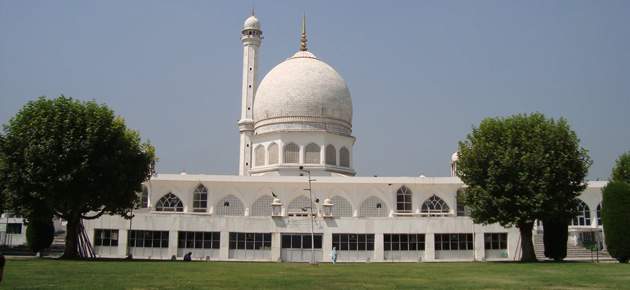
Charar-i-Sharif
Location :
Approximately 40 km from Srinagar
Dedicated to :
Sheikh Noor-ud-Din Noorani, a Sufi saint
Charar-i-sharif counts amongst the most sacrosanct Muslim shrines in India. It is situated approximately 40 km from Srinagar, enroute to Yusmarg near POK (Pakistan Occupied Kashmir). A wooden shrine, the Charar-i-sharif is approximately 600 years old. Popularly known as the Hazrat Sheikh Noor-ud-Din Wali, the shrine was built to commemorate Sheikh Noor-ud-Din Noorani, a Sufi saint. The life of the Sheikh is full of legends and tales. He was born as Nund Reshi or Sahazanand to Salar Sanz in 1377. It is said that he refused to drink milk till the third day after his birth, when a Yogini (female saint), Lal Ded fed him with her own milk. Later, she left the house after saying that the child would be her spiritual heir.
Sheikh Noor-ud-Din Noorani or Nund Rishi was the first one to start Rishism in the valley. Later, this Rishism got renowned as Rishi Mat, a Vishnav Mat. The saint preached communal harmony, non-violence, vegetarianism and tolerance to the people. He gathered many followers who called him by different names. Some of the names conferred on the saint are Sheikh-ul-Alam, Sheikh Noor-ud-Din Noorani, Alamdar-e-kashmir, Sarkhel-e-Rishiya, etc. Apart from preaching, the Sheikh made numerous contributions in the field of philosophy also, in the form of verses and poetry.
The saint led a very simple life throughout. It is said that nine lakh people gathered at the Shrine of Charar within two days of his death, in 1438. The King Sultan Zainul Abdin also took part in his funeral procession. Charar e Sharif served as his final resting place, where his mortal remains were buried. The Charar-e-sharief of Kashmir, India, has been destroyed twice. The first time, the shrine and its surroundings suffered ruination was when a battle took place between the Indian Army and the Pakistani Army. However, the shrine was reconstructed on the lines of central Asian architecture. But, again in 1995 Islamic militants destroyed a major part of the shrine in a fire. Still, after all the assaults the shrine continues to be revered and respected by both the Hindus as well as Muslims